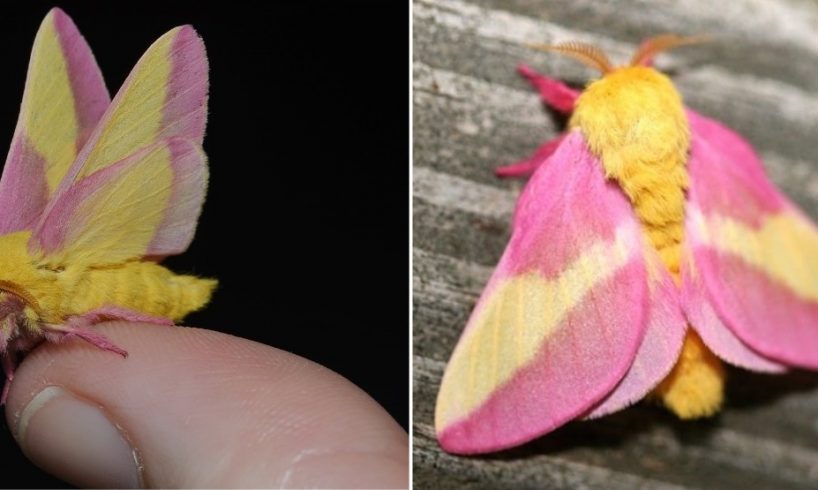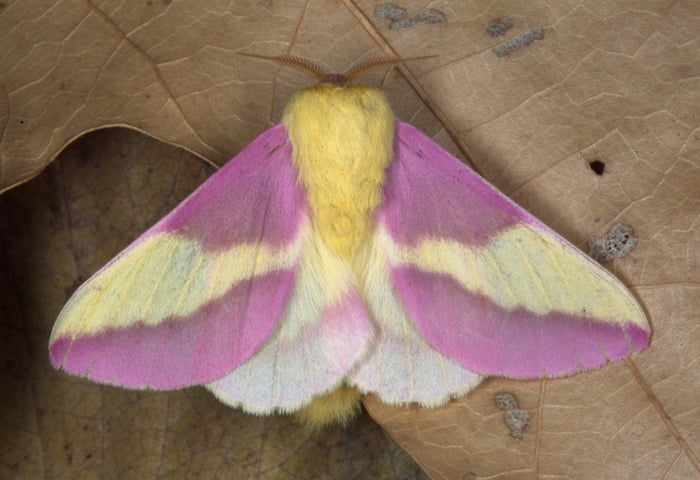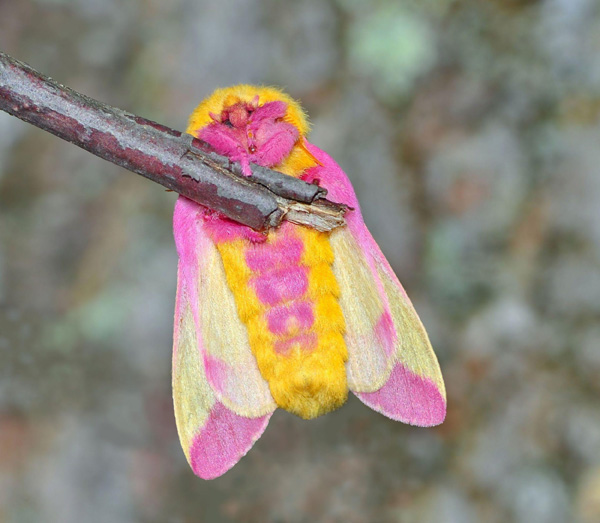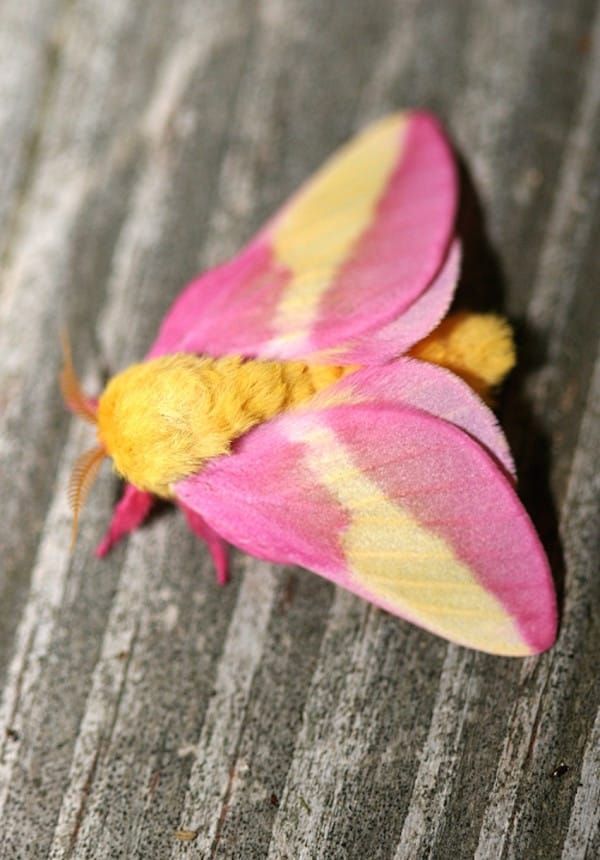
In the world of insects, the butterflies and moths generally transform similarly. Once they are born, they emerge as caterpillars and go through larvae stages. However, after the transition stage, butterflies emerge much more colorful than moths, which are mostly color gray. Locals of North America have discovered an eye-catching species of moth that is colored pink and yellow.

The pink and yellow colored moth is called the “Rosy maple moth.” Its scientific name is Dryocampa rubicunda. The adult female moth lay their eggs under the leaves of maple trees. Once the eggs hatch, the babies undergo 5 larvae stages. During the first 3 stages, the larvae live and eat together. It is not until the fourth stage that the larvae can eat independently, until they transform into adulthood. They can often be seen in the eastern United States and southern Canada.

The larvae of the Rose Maple Moth are called the “greenstriped mapleworm.” They generally eat leaves from maple trees. Since the moths love to eat the entire leaf blade in places populated with maple trees, they are known to consume them all, resulting in the trees’ beauty rather than permanent damage. These types of moths are particularly abundant in North America, and the locals are in awe of them due to their dreamy appearance.

During lockdown in May 2020, a woman chanced upon one of these colorful moths in her backyard. Digital director, author, and podcaster Rebecca Lavoie resorted to her Twitter account and shared photos of the colorful moth. In her post, she said, “This moth exists in nature, and it’s ON MY DECK.” Rebecca kept posting updates as more people started sharing their own experiences of these moths Soon, her post garnered 565,000 ‘Likes’.


▼ This is the Greenstriped mapleworm in its early stages.


Although moths are common in any country, you can only encounter these colorful species in North America. Some locals claim they can be as beautiful and eye-catching as the flowers and butterflies. Their bodies and wings are like rose petals and are plentiful in warmer regions of the country. However, the male Rose Maple Moth is nocturnal and prefers flying throughout the first third of the night.
Images credits: © Rebecca Lavoie @reblavoie/Twitter, Andy Reago & Chrissy McClarren, and Bored Panda






